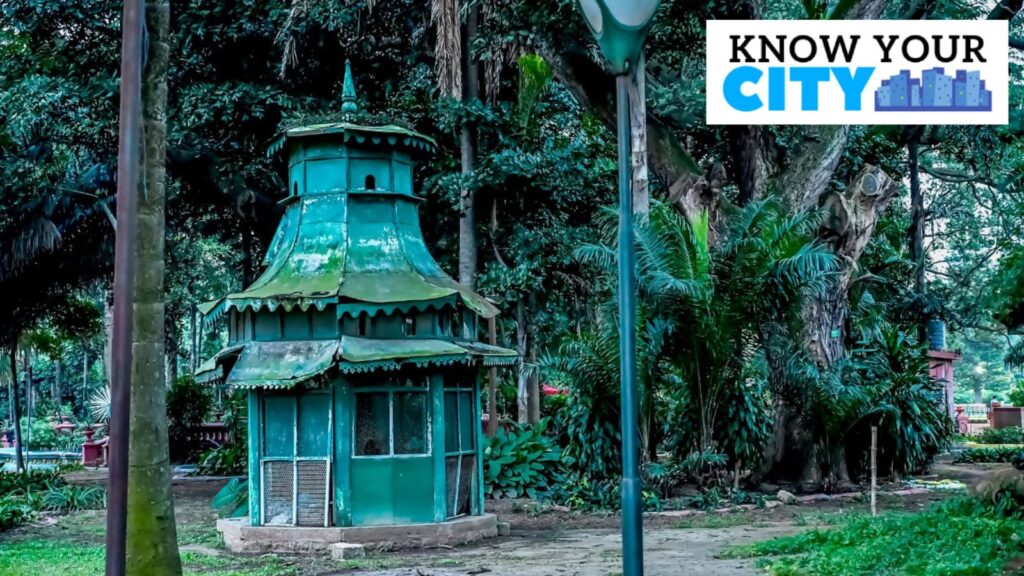Most visitors to Bengaluru’s Lalbagh today know it for its trees—or perhaps unique pieces of architecture like the Glass House, or perhaps even the billion-year-old rock formation that holds one of the watchtowers of city founder Kempe Gowda. But a little over a century ago, Lalbagh was home to a great variety of captive birds and animals in an aviary and what seems to have been a small zoo.
One of the best single resources on the history of zoos in Lalbagh was a 1999 write-up by Sally Walker, a zoologist and conservationist. She was long associated with the zoos of the country and founded the Friends of Mysore Zoo group.
The first trace of animals being kept in Lalbagh seems to date back to 1862, when a black panther was purchased during the superintendence of William New. By the time his successor, John Cameron, took over in 1874, there seemed to have been an aviary as well. An aviary structure still remains in Lalbagh today. Bengaluru historian Meera Iyer estimates that it may be around 150 years old in her book Discovering Bengaluru.
In these early days when the art of modern zookeeping was still in comparative infancy, Cameron seems to have run into a host of difficulties. Walker records several of these, which she located in a report on Lalbagh penned by Cameron. At the time, this document, which seems to have been the sole copy, was located in the MH Marigowda Library in Lalbagh. The library, which houses a great deal of rare documents, oil paintings, and books from the early days of Lalbagh, is undergoing restoration.
 The circular building, which originally served as a menagerie housing various birds and animals, was opened to the public in the early 1860s. It was later converted into an aquarium. (Express photo by Jithendra M)
The circular building, which originally served as a menagerie housing various birds and animals, was opened to the public in the early 1860s. It was later converted into an aquarium. (Express photo by Jithendra M)
When tigers and a bear escaped from their cages
One of these difficulties came in 1888, when a tigress escaped when its den’s doors were left open. Luckily for all involved, the tigress went back in after three hours, after which its keeper (who had been sheltering in a nearby tree) took the opportunity to lock the door. On another occasion, a bear escaped and injured a woman, who had to be compensated for her injuries.
In 1890, a male tiger was donated to Lalbagh by the Maharaja of Mysore. But just a year later, the tiger was in great pain from what seems to have been a case of his claws growing inwards. In the absence of the sedative darts of today, the tiger had to be lured into an enclosed trap that restricted his movement, where the section of claw growing into his paws could be removed. Lalbagh’s collection in the late 1800s was quite impressive, considering that it was a small subset of a primarily horticultural garden, with animals ranging from loris, anteaters, a hyena cub, and even an orangutan.
The orangutan in particular was a hit with visitors. Having been imported at a staggering cost of Rs 1,000 from Sumatra, it was known as the Ape Man. When it died after seven years from disease, Cameron tried to have it preserved by a taxidermist at the Government Museum. The late Vijay Thiruvady notes in Lalbagh: Sultan’s Garden to Public Park that the job was botched, leading Cameron to rope in the famous Van Ingens of Mysuru to rectify the problem—but it seems to have been beyond even them at that point.
Story continues below this ad
The collection began to decline in 1920 after most wildlife was transferred to the Mysore Zoo. In any case, Cameron himself had always been ambivalent over the idea of housing animals at Lalbagh, which in his view was a primarily horticultural enterprise, especially with the budget that he had to work with.
Circular aviary
The circular aviary from Cameron’s time, which was later used as an aquarium, seems to be the last physical remnant of Lalbagh’s time as a zoo. While there was a proposal a few years ago to restore the building, it does not seem to have been taken up.
With regard to the building, Meera Iyer of the Indian National Trust for Art and Cultural Heritage said, “The building is two concentric circles, which is a good design for an aviary…there was a pool in the centre which was added later and served as a birdbath. There are a couple of places in England where circular aviaries have been built, but not like this. It is really an unusual design.”
Documents also refer to it as a menagerie, so animals may also have been housed here, especially the smaller species. The structure also appears to have been rebuilt around 1910.
Story continues below this ad
The building has also had to face the effects of decades of wear and tear. Iyer notes, “Parts of the roof are in really bad shape. The drainage spouts on top are blocked and so leaves and water piles up there.”

